You know what’s funny? Setting the right price for your product or service is probably the fastest way to boost your profits, yet most of us are just winging it. Every management consulting firm worth their salt helps clients figure out pricing because, according to My Consulting Offer, it gets crazy complicated as companies grow. Suddenly you’ve got five different products, each with their own costs, and customers who all want different things at different price points.
I’ll never forget my first real pricing disaster at my old company. We’d built this amazing product – revolutionary stuff, we thought – but had absolutely no clue what to charge for it. We basically threw a dart at a board and hoped for the best. Spoiler alert: we left a ton of money on the table for months before realizing we needed to actually think this through systematically. That painful experience taught me why studying what actually works beats guessing every single time.

Table of Contents
-
TL;DR: Key Takeaways
-
Why Pricing Case Studies Matter More Than Ever
-
The Framework That Changes Everything
-
Technology & SaaS Pricing Breakthroughs
-
E-commerce & Retail Pricing Innovations
-
Healthcare & Pharmaceutical Pricing Strategies
-
Financial Services Pricing Disruptions
-
Transportation & Mobility Pricing Models
-
Food & Hospitality Pricing Tactics
-
How to Apply These Lessons to Your Business
-
Final Thoughts
TL;DR: Key Takeaways
Here’s what I learned after diving deep into 25 pricing success stories:
-
You need a real framework, not gut feelings – successful pricing considers market context, strategic fit, how hard it’ll be to pull off, what you can actually measure, and what could go wrong
-
Tech companies are killing it with tiered pricing that makes customers want to upgrade naturally
-
E-commerce businesses win by being transparent about costs and creating membership programs that keep people coming back
-
Healthcare pricing is all about proving your stuff actually works and saves money long-term
-
Financial services companies are disrupting everyone by making pricing simple instead of confusing
-
Transportation companies use fancy algorithms to charge more when demand is high (and somehow we’re all okay with it)
-
Restaurants and hotels succeed by making you pay for the experience, not just the product
-
The secret sauce is having good data and the guts to act on it
Why Pricing Case Studies Matter More Than Ever
Look, pricing decisions have become make-or-break for businesses today. Markets move faster than they used to. Customer expectations shift constantly. Your competitors can change their prices while you’re having lunch. You can’t just rely on what feels right anymore.
The companies that figure out pricing don’t just survive – they absolutely dominate their markets. The ones that don’t? Well, they’re usually struggling to pay the bills while wondering where they went wrong.
Here’s what makes pricing so brutal these days: everything changes all the time. What worked last year might be completely wrong today. Customers expect more value for less money. Competitors can undercut you with a few clicks. You need more than intuition to win this game.
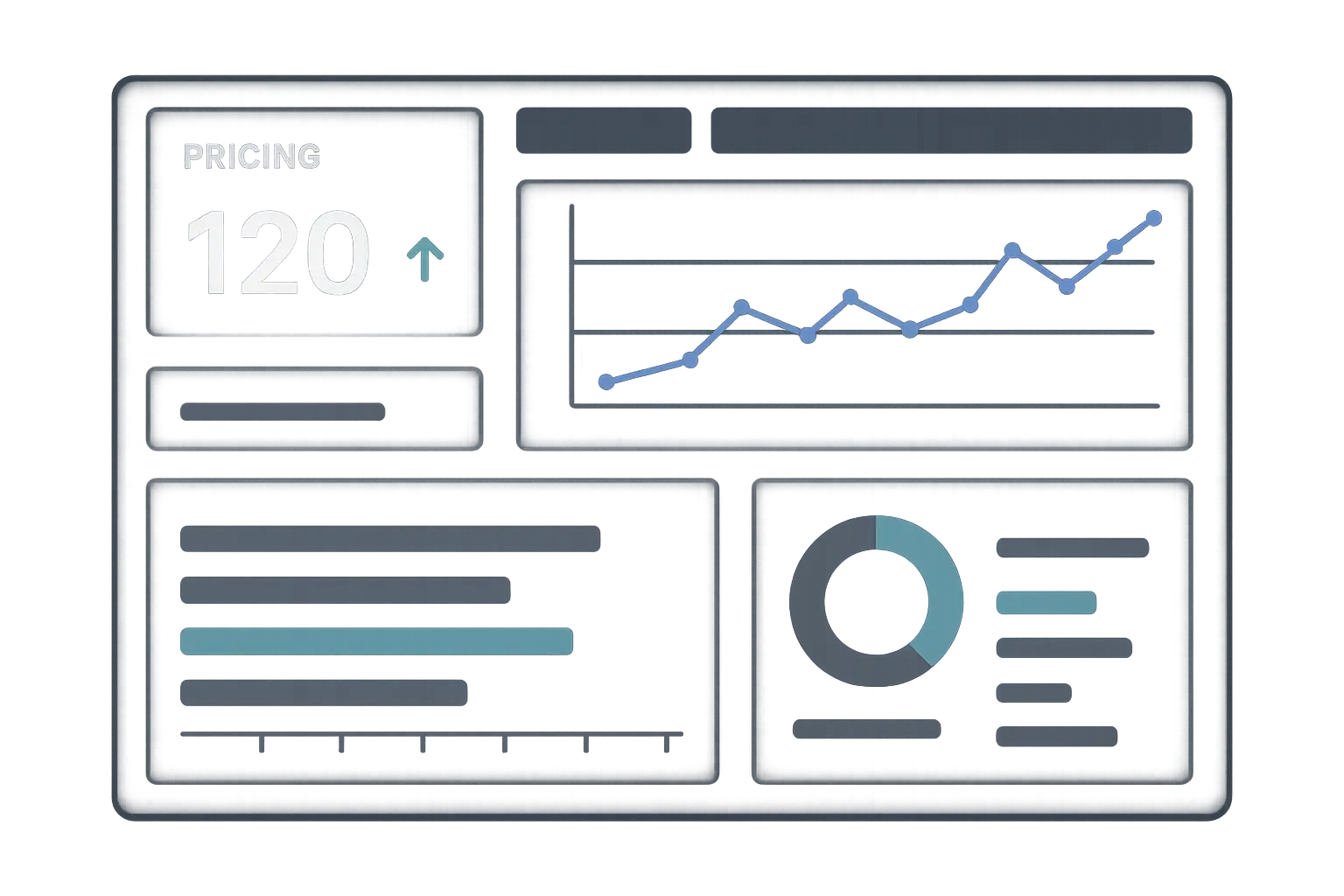
The businesses that are crushing it use real data and proven frameworks. They study what others have done, figure out how to adapt those lessons to their situation, and execute without second-guessing themselves. That’s why looking at actual pricing case studies is so valuable – you get to see both the wins and the epic fails.
Understanding your market becomes crucial when you’re developing pricing strategies, which is why a lot of smart businesses invest in comprehensive market sizing analysis to figure out where the real opportunities are hiding.
The Framework That Changes Everything
Okay, so here’s the thing – I’ve seen way too many businesses just throw pricing against the wall and hope something sticks. That’s why I swear by this framework that covers the five things that actually matter when you’re setting prices.
Before we dive into the juicy case studies, you need a way to evaluate pricing strategies that doesn’t involve crossing your fingers and hoping for the best. Here’s the framework that’s saved me from countless pricing disasters.
|
Framework Criteria |
What You Need to Figure Out |
How You Know It’s Working |
|---|---|---|
|
Market Context |
Industry dynamics, who you’re selling to, what competitors are doing, any regulations you need to worry about |
Your positioning makes sense, you’re targeting the right people |
|
Strategic Alignment |
Does this fit your business model, revenue goals, brand image, long-term plans |
Everything feels consistent, supports where you want to go |
|
Implementation Complexity |
What resources you need, technology requirements, organizational changes, timeline |
You can actually pull this off with what you have |
|
Measurable Impact |
Revenue growth, customer metrics, profit margins, market share |
You have clear ways to track if it’s working |
|
Risk Assessment |
Customer backlash, competitor responses, implementation failures, legal issues |
Risks are manageable, you have backup plans |
Market Context & Industry Relevance
First up – does this actually make sense for your market? I’ve seen restaurants try surge pricing like Uber, and let me tell you, hangry customers don’t care about your supply and demand algorithms.
You need to understand how mature your industry is. New markets let you get away with things that established ones don’t. Your customers’ price sensitivity varies wildly depending on who they are and what they’re buying. Market size and growth potential determine how much flexibility you actually have.
And don’t forget about regulations – what works in one industry might literally be illegal in another.
Strategic Alignment
Second – does this fit with what you’re actually trying to accomplish? If you’re going for premium positioning, don’t undercut yourself with discount pricing just because you’re scared.
Your pricing has to match your business model perfectly. B2B companies need completely different approaches than B2C businesses. Subscription models require different thinking than one-off transactions.
Your revenue goals and profit requirements set the boundaries. Brand positioning affects what customers will actually accept. Long-term objectives determine whether you’re optimizing for growth or immediate profits.
Implementation Complexity
Third – can you actually pull this off? Some pricing strategies look amazing on paper but require systems and processes you don’t have. Be brutally honest about your limitations.
Resource requirements vary like crazy between different approaches. Some need sophisticated technology platforms. Others require extensive staff training. Time-to-market can make or break your success.
Organizational change becomes critical when pricing affects how your entire company operates. If you don’t have good data and analytics, that limits what you can realistically execute.
Measurable Impact
Fourth – how will you know if it’s working? And I don’t just mean revenue – what about customer happiness, retention, all that stuff that matters long-term?
You need to be able to quantify revenue growth potential. Customer acquisition and retention metrics need clear tracking. Profit margin improvements require accurate measurement. Market share implications affect your long-term positioning.
Without measurable outcomes, you’re basically flying blind.
Risk Assessment
Fifth – what’s the worst that could happen? Because trust me, customers will surprise you with their reactions, and competitors will definitely surprise you with theirs.
Customer churn probability goes up with certain pricing changes. Competitive response likelihood varies by industry and your market position. Implementation failures can absolutely destroy customer relationships.
Legal and compliance considerations are getting more important as regulations tighten everywhere.
This framework gives you a solid foundation for evaluating any pricing approach, whether you’re analyzing what competitors are doing or developing your own strategies.
Technology & SaaS Pricing Breakthroughs
You know what’s funny? Tech companies used to be terrible at pricing. Remember when software cost $500 for a CD-ROM? But somewhere along the way, they figured out something the rest of us are still learning from.
These companies now use data like crazy, test everything constantly, and optimize relentlessly. Here’s what they’ve learned that you can actually use.
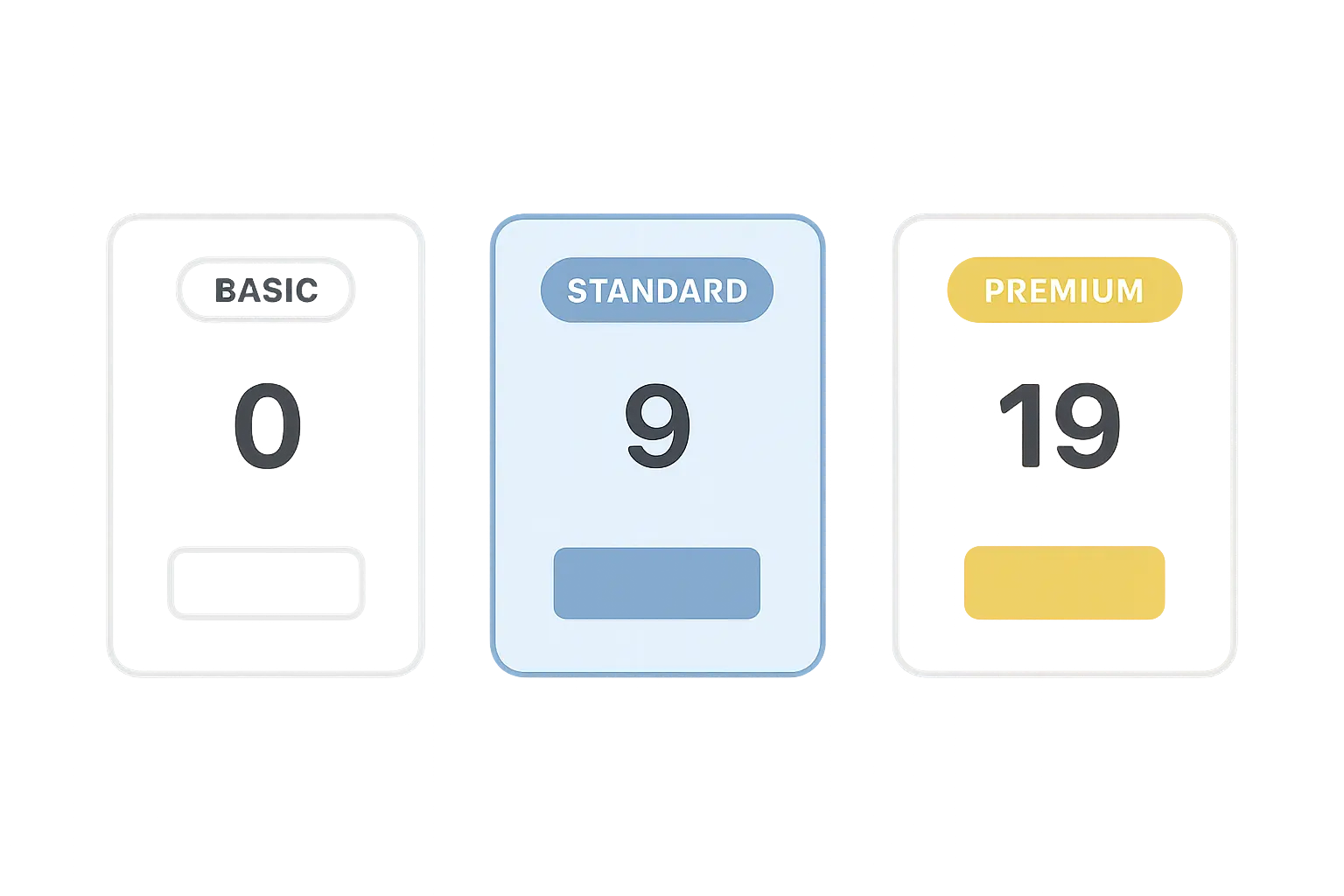
1. Netflix’s Tiered Subscription Evolution
Remember when Netflix was just one simple price? Those days are long gone. They went from a single $8.99 tier to this whole complicated system – Basic at $6.99, Standard at $15.49, Premium at $19.99, plus they threw ads back into the mix.
What’s brilliant about this is how they make you feel like you’re missing out if you don’t upgrade. Can only watch on one screen? Good luck explaining to your family why they can’t watch their show while you’re binge-watching The Office for the hundredth time.
Framework Check: The streaming market is mature enough that people understand tiered pricing. This strategy perfectly matches their subscription revenue goals. Implementation was straightforward using their existing platform. They can easily track which tiers people choose and how often they upgrade. The risk was pretty low since they could roll this out gradually.
Netflix’s success shows principles you can find in our detailed Netflix international expansion case study, which dives into how smart pricing supported their global growth.
2. Slack’s Freemium to Enterprise Scaling
Slack’s approach is basically evil genius level stuff. They give you 10,000 messages for free, then when your team inevitably hits that limit, you’re basically forced to upgrade to Pro ($7.25 per user per month), then Business+ ($12.50), then Enterprise (they won’t even tell you the price until you call).
The beauty is that teams hit that message limit naturally. No heavy-handed sales tactics needed – you just run out of your conversation history and suddenly paying $7.25 per person doesn’t seem so bad.
Framework Check: B2B software buyers expect freemium these days. This aligns perfectly with viral growth and enterprise expansion goals. Implementation is just feature gating and usage tracking – pretty straightforward. Conversion rates and upgrade timing give you clear metrics. Risk is low since this model is proven.
Real-World Example: A project management software company I know copied Slack’s approach. They offered unlimited projects for teams under 5 users, then limited larger teams to just 3 projects on the free tier. Their conversion rate jumped from 2% to 12% in six months because teams naturally hit that project limit and had to upgrade to keep being productive.
3. Adobe’s Creative Cloud Subscription Transition
This one was brutal to watch. Adobe basically forced everyone off perpetual licenses (remember paying $699-$2,599 upfront?) to monthly subscriptions ($20.99-$52.99 per month). Customers were furious at first, but Adobe stuck to their guns.
The reduced upfront cost made professional software accessible to way more people, while Adobe got predictable recurring revenue instead of sporadic big purchases.
Framework Check: This required massive customer education about subscription benefits. The strategic shift from sporadic to predictable revenue was huge. Implementation demanded serious customer communication and change management. The measurable impact showed dramatic improvements in recurring revenue and customer lifetime value. But man, the initial customer backlash was rough.
4. Zoom’s COVID-19 Pricing Adaptation
Zoom played this perfectly during the pandemic. They extended free tier limits when everyone was stuck at home, built a massive user base, then introduced premium enterprise features at higher prices once businesses got hooked.
Smart move – get everyone using your product during a crisis, then monetize through enhanced business features once they can’t live without you.
5. Salesforce’s Platform-as-a-Service Pricing
Salesforce’s tier progression is like a masterclass in customer psychology. They start you at Essentials ($25 per user per month), then Professional ($75), Enterprise ($150), and Unlimited ($300), with custom Enterprise pricing on top.
Each tier offers significantly more functionality, making upgrades feel natural rather than forced. By the time you’re considering Unlimited, that $300 per user doesn’t seem crazy because you can see exactly what you’re getting.
6. Microsoft 365’s Bundle Strategy
Microsoft figured out something brilliant with Office 365 – bundle everything together and suddenly customers feel like they’re getting 300% more value than buying individual apps. You pay more total, but it feels like a better deal.
Most people only use Word, Excel, and PowerPoint, but they’ll pay for the whole suite because the perceived value is so much higher.
E-commerce & Retail Pricing Innovations
E-commerce companies face this weird challenge – they have to compete on price transparency while somehow building customer loyalty. The smart ones have found creative ways to have their cake and eat it too.
7. Amazon Prime’s Membership Evolution
Amazon Prime is probably the most successful pricing strategy in modern business. They started at $79 per year and now charge $139, but nobody seems to care because they keep adding more stuff – shipping, video, music, grocery delivery, you name it.
Here’s the kicker – Prime members spend way more than regular customers. Amazon created this ecosystem where once you’re in, it’s really hard to justify leaving.
Framework Check: The e-commerce ecosystem provides tons of value touchpoints. This strategy perfectly aligns with customer retention and ecosystem lock-in goals. Implementation required massive infrastructure investment across multiple services. The spending difference between Prime and regular members provides clear measurable impact. Risk was low because the value proposition was so diversified.

Amazon’s membership approach connects to insights from our Amazon case study that explores how integrated pricing and service offerings create competitive advantages.
8. Warby Parker’s Direct-to-Consumer Disruption
Warby Parker basically said “screw the middleman” and started selling $95 prescription glasses directly to consumers. Traditional retail markup had people paying $300-$500 for the same quality.
The transparent pricing eliminated traditional retail margins while maintaining quality. Customers could finally understand what they were actually paying for.
9. Dollar Shave Club’s Subscription Razor Model
Dollar Shave Club’s $1, $6, $9 monthly plans made Gillette’s $15-20 cartridge replacements look absolutely ridiculous. Add convenience and predictable delivery, and suddenly millions of guys were willing to switch.
The subscription model gave them predictable revenue while solving a real customer problem – never running out of razor blades.
10. Tesla’s Dynamic Pricing Strategy
Tesla does something that would probably get any other car company in trouble – they adjust prices in real-time based on demand, production capacity, and market conditions. Somehow, customers accept this because it’s Tesla.
The direct-to-consumer model eliminates dealer markups, and the scarcity-driven premium pricing maintains brand exclusivity.
11. Costco’s Membership Fee Business Model
Costco’s genius is charging you $60-$120 per year for the privilege of shopping there, then selling everything at near-cost. The membership revenue subsidizes product margins, creating incredible customer loyalty.
Members feel like they’re getting wholesale prices, which drives higher purchase volumes. It’s brilliant psychology.
|
E-commerce Pricing Model |
Key Strategy |
Revenue Impact |
Customer Benefit |
|---|---|---|---|
|
Amazon Prime |
Ecosystem bundling |
+25% member spending |
Free shipping + services |
|
Warby Parker |
Direct-to-consumer |
70% margin improvement |
$95 vs $300+ glasses |
|
Dollar Shave Club |
Subscription convenience |
90% customer retention |
$1-9 vs $15-20 razors |
|
Tesla |
Dynamic scarcity |
20% premium pricing |
No dealer markups |
|
Costco |
Membership subsidy |
$4B+ membership revenue |
Wholesale pricing access |
Healthcare & Pharmaceutical Pricing Strategies
Healthcare pricing is probably the most controversial topic in business today. Companies operate in this complex regulatory environment where proving value becomes absolutely critical. The most successful strategies focus on patient outcomes and economic benefits rather than just production costs.
12. Gilead’s Sovaldi Hepatitis C Pricing
Now, Gilead’s Sovaldi pricing is either genius or evil, depending on who you ask. A thousand bucks per pill when it costs maybe $136 to make? On paper, that sounds insane.
But here’s the kicker – it actually cures hepatitis C, something that used to be basically a death sentence. So are you paying for the pill, or are you paying for not dying? The math gets interesting when you consider it prevents liver transplants ($500,000+), saves lifetime healthcare costs ($300,000+ per patient), and the quality of life improvements are worth about $150,000.
Despite the initial outrage, the pricing stuck because the clinical and economic value was undeniable.
Framework Check: The regulatory environment is complex and requires careful navigation. Value-based pricing aligns perfectly with outcomes-focused healthcare. Implementation involves high complexity with regulatory approvals. Clear clinical and economic outcomes provide measurable impact. High regulatory and reputational risks require careful management.

Real-World Application: A medical device company used Gilead’s value-based approach for their new cardiac monitoring system. Instead of cost-plus pricing at $15,000, they priced at $45,000 by demonstrating prevention of one cardiac event ($150,000 average cost) per device over three years. Insurance companies accepted the pricing because the economic value was crystal clear.
13. 23andMe’s Genetic Testing Price Evolution
23andMe went from $999 in 2007 to $99 in 2020 – that’s not a typo. Their strategy was market penetration pricing, but here’s the twist: the genetic data became the real revenue source, not the test kits.
Lower prices got more people to spit in tubes, and that data became incredibly valuable for research partnerships and drug development.
14. Teladoc’s Virtual Care Pricing
Teladoc figured out that different customers want to pay differently. They offer per-visit pricing ($75), subscription models ($12-15 per month), and enterprise contracts. This multi-channel approach captures different customer preferences effectively.
Some people want to pay as they go, others want predictable monthly costs, and companies want bulk deals. Why force everyone into one model?
15. Peloton’s Hardware + Subscription Model
Peloton follows the classic razor-blade model – sell the bike for $1,495-$2,495, then get you hooked on the $39 monthly subscription. The hardware gets you in the door, but the subscription is where they make their money long-term.
It’s brilliant because once you’ve dropped two grand on a bike, that $39 per month feels reasonable to actually use the thing.
Financial Services Pricing Disruptions
Financial services pricing was ripe for disruption. Traditional banks had these insanely complex fee structures that nobody understood. The disruptors came in with simple, transparent pricing and forced everyone else to follow.
16. Robinhood’s Commission-Free Trading
Robinhood basically said “what if we just didn’t charge commissions?” when everyone else was charging $7-10 per trade. Sounds crazy until you realize they make money through payment for order flow ($0.002-0.02 per share), premium services (Robinhood Gold at $5 per month), interest on cash, and cryptocurrency spreads.
This forced the entire industry to eliminate commissions. Charles Schwab, E*Trade, everyone had to follow or lose customers.
Framework Check: Heavily regulated environment requires compliance focus. Clear disruption opportunities existed in traditional fee structures. Regulatory approval and security requirements complicated implementation. Transaction volume and alternative revenue streams provide clear measurement. Regulatory and competitive risks require ongoing management.
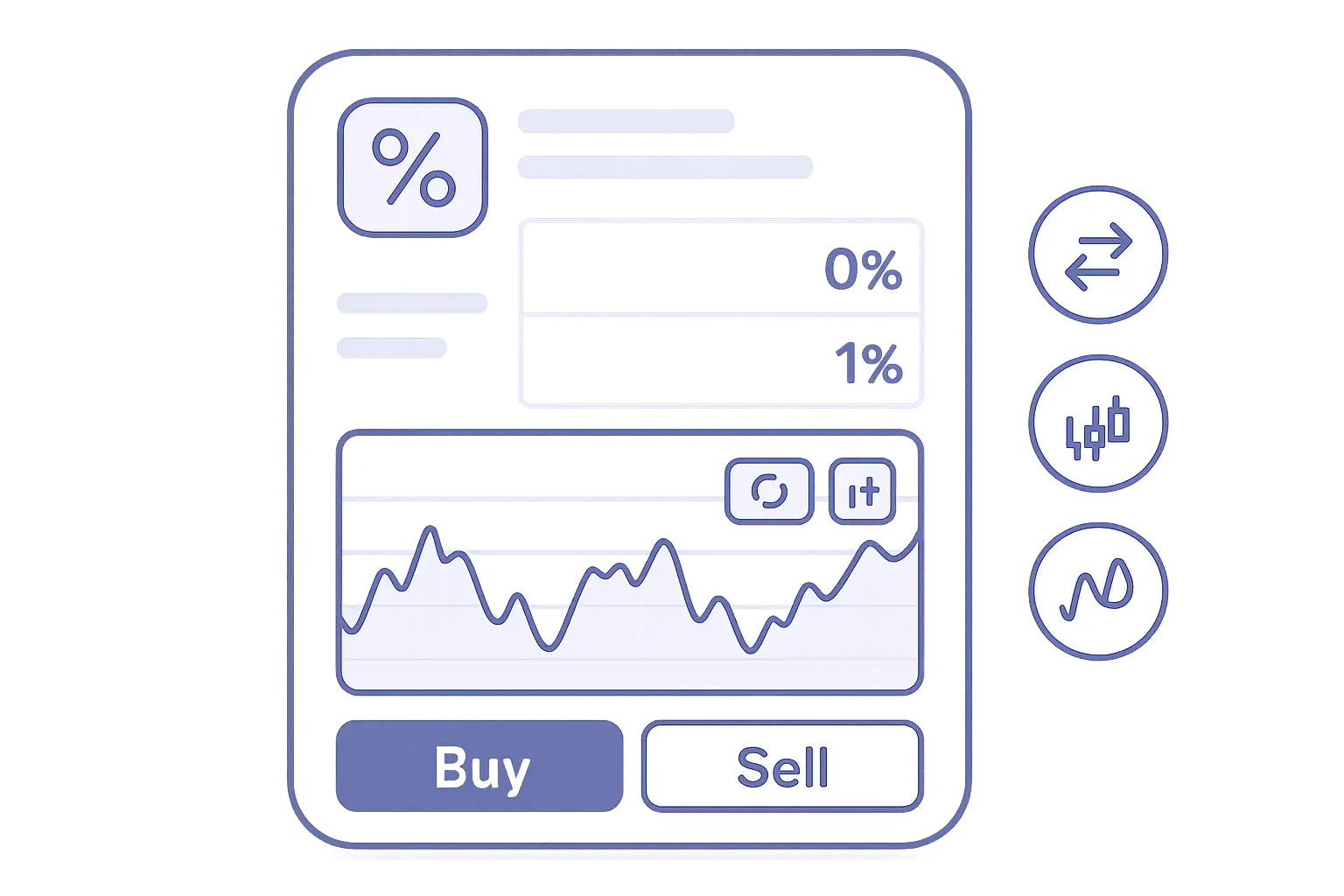
17. Square’s Payment Processing Innovation
Square’s flat 2.6% + $0.10 per transaction replaced those nightmarish traditional merchant fee structures that nobody could understand. Small businesses could finally figure out exactly what they’d pay for payment processing.
The transparent, simplified pricing drove massive small business adoption because entrepreneurs could actually do the math.
18. Stripe’s Developer-First Pricing
Stripe’s 2.9% + $0.30 per transaction with no setup fees or monthly charges created a pure transaction-based model that developers absolutely loved.
When you’re building an app and need payment processing, transparent and predictable pricing makes integration decisions so much easier.
19. PayPal’s Multi-Sided Market Pricing
PayPal’s approach is sneaky smart – free consumer transfers drive adoption, then they charge merchants 2.9% plus a fixed fee. Cross-subsidization between user segments creates network effects.
The more consumers use PayPal for free, the more valuable it becomes for merchants to accept it, even though they’re paying the fees.
Transportation & Mobility Pricing Models
Transportation companies deal with supply and demand that changes constantly throughout the day. The successful ones use sophisticated algorithms to optimize pricing in real-time, though they have to be really careful about customer communication.
20. Uber’s Surge Pricing Algorithm
Uber’s surge pricing is probably the most sophisticated pricing algorithm most of us interact with daily. They adjust rates based on real-time supply and demand, historical patterns, weather, events, geographic heat mapping, and driver availability.
Pricing multipliers can go from 1.2x to 5.0x normal rates during peak demand. They show you upfront surge notifications with trip cost estimates, which keeps things transparent. Higher earnings during surge periods bring more drivers online.
The results speak for themselves – 15-20% revenue increase during peak times while maintaining service availability.
Framework Check: Two-sided marketplaces require careful supply-demand balance. Platform optimization aligns perfectly with strategic goals. Real-time algorithmic pricing with transparent communication involves moderate complexity. The 15-20% revenue increase with maintained service availability provides clear measurable impact. Customer communication, price caps, and competitor monitoring help manage risks.
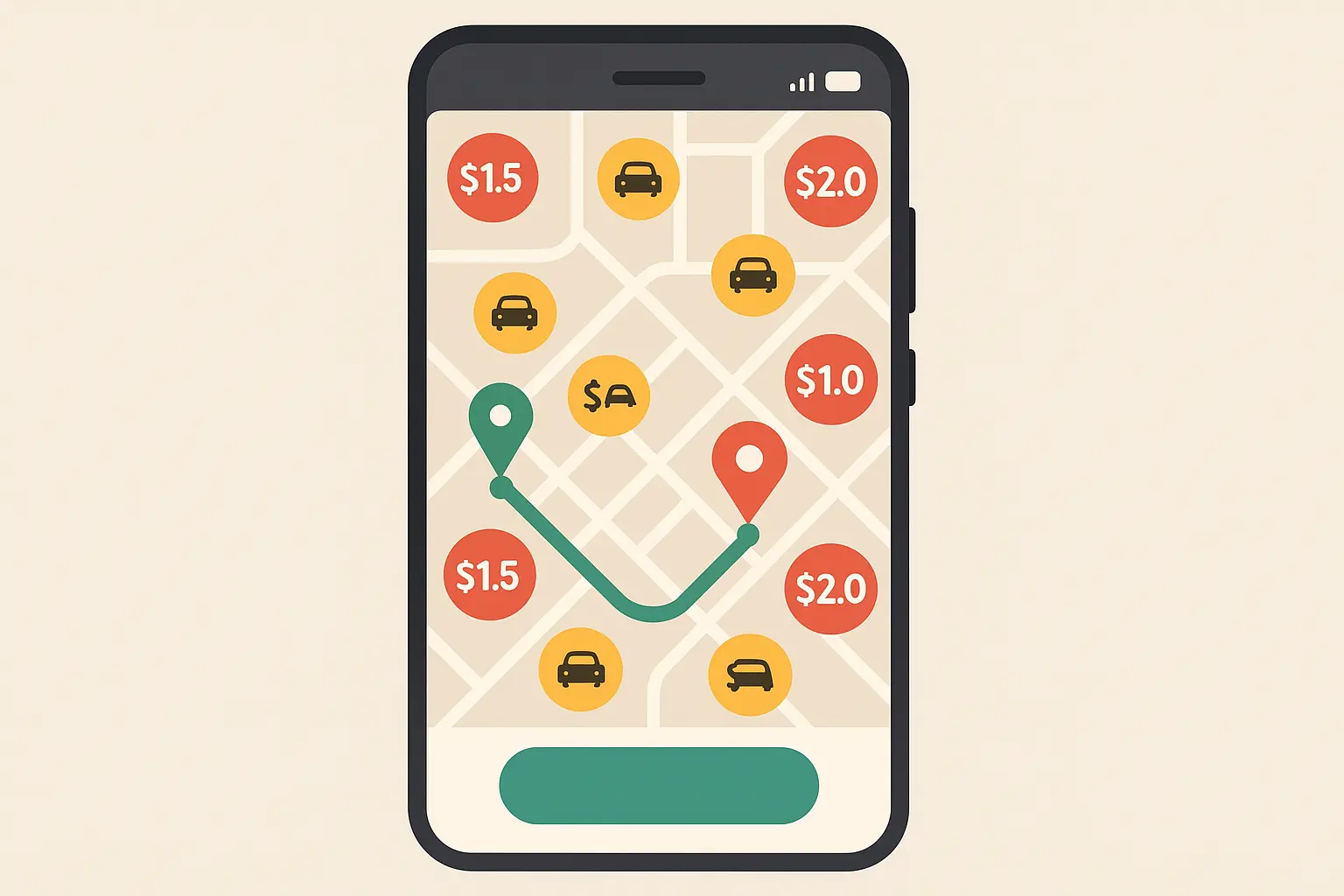
Uber’s surge pricing success demonstrates sophisticated algorithmic approaches, similar to strategies explored in our Uber case study which analyzes their comprehensive market expansion tactics.
21. Bird’s Scooter Pricing Optimization
Bird’s $1 unlock plus $0.15-0.39 per minute with time-of-day and location-based adjustments optimizes revenue based on demand density and operational costs.
Dynamic pricing ensures scooters are available when and where customers need them most, while maximizing revenue during peak demand periods.
22. Southwest Airlines’ Simplified Fare Structure
Southwest eliminated those crazy complex fare classes for transparent, route-based pricing with free bags. The operational efficiency from pricing simplicity reduces costs and customer confusion.
Simple pricing makes booking decisions easier while reducing the operational complexity that drives other airlines crazy.
Food & Hospitality Pricing Tactics
Food and hospitality businesses understand something crucial – customers pay for experiences, not just products. The most successful pricing strategies reflect this understanding.
23. DoorDash’s Multi-Fee Structure
DoorDash has turned fee optimization into an art form. They’ve got delivery fees ($1.99-4.99 based on distance and demand), service fees (10-15% of subtotal, varies by market), small order fees ($2 for orders under $12), peak time pricing (10-25% surge during high demand), and DashPass subscriptions ($9.99 per month to eliminate most fees).
They A/B test across 300+ markets to optimize each fee component. Different pricing for DashPass versus regular customers creates natural segmentation. Commission rates (15-30%) vary based on restaurant partnership levels.
Framework Check: Consumer behavior in food delivery is well-understood, providing clear market context. Experience-based differentiation aligns with strategic positioning. Implementation is straightforward with existing technology. Clear revenue and customer metrics enable measurement. Lower risk due to established market dynamics.
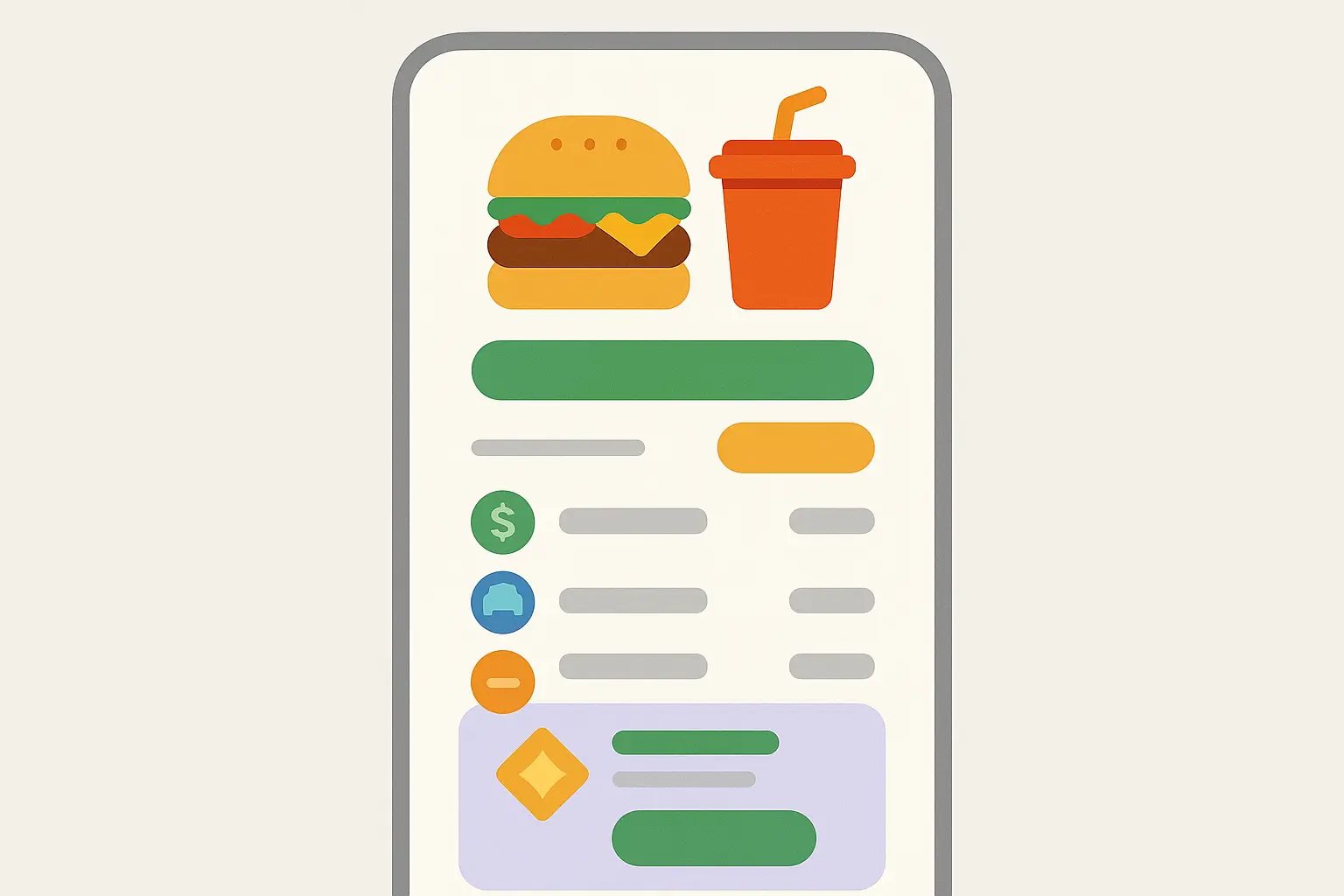
Real Application: A local restaurant delivery service copied DoorDash’s multi-fee approach – $2.99 delivery fee, 12% service fee, and $1.50 small order fee for orders under $15. They also launched a $7.99 monthly subscription that eliminated delivery fees. Within four months, 18% of customers had subscriptions, and average order values increased 23% as people bundled orders to avoid small order fees.
24. Airbnb’s Host Pricing Tools
Airbnb’s Smart Pricing algorithm adjusts rates based on over 70 factors including seasonality, local events, and competition. The AI-driven pricing optimization comes with host override capabilities, so you get algorithmic efficiency while maintaining host control.
Hosts can accept the algorithm’s suggestions or override based on their local knowledge – best of both worlds.
Airbnb’s pricing optimization demonstrates how platform businesses can balance algorithmic efficiency with user control, as detailed in our comprehensive Airbnb case study which explores their market disruption strategies.
25. Starbucks’ Premium Positioning Strategy
Starbucks charges $5-6 for specialty drinks versus $1-2 fast-food coffee, and somehow we all keep paying it. They’ve justified premium pricing through experience and quality positioning, plus their loyalty program keeps customers coming back.
You’re not just buying coffee – you’re buying the Starbucks experience, the WiFi, the ambiance, the feeling of treating yourself.
Starbucks’ premium pricing strategy showcases brand positioning principles explored in our Starbucks case study marketing strategy which analyzes how they maintain pricing power through brand experience.
|
Industry Sector |
Pricing Innovation |
Key Success Factor |
Revenue Impact |
|---|---|---|---|
|
Technology/SaaS |
Tiered subscriptions with freemium |
Value-based feature differentiation |
+40-60% ARPU growth |
|
E-commerce/Retail |
Membership ecosystem bundling |
Comprehensive value proposition |
+25% member spending |
|
Healthcare/Pharma |
Value-based outcome pricing |
Clinical and economic validation |
Premium pricing sustainability |
|
Financial Services |
Transparent fee elimination |
Alternative revenue monetization |
Industry-wide disruption |
|
Transportation |
Dynamic algorithmic pricing |
Real-time supply-demand optimization |
+15-20% peak revenue |
|
Food/Hospitality |
Multi-fee structure optimization |
Experience-based value perception |
+23% average order value |
How to Apply These Lessons to Your Business
Alright, so you’ve seen 25 different approaches to pricing across six industries. Now comes the hard part – figuring out which lessons actually apply to your situation and how to implement them without accidentally destroying your existing business.
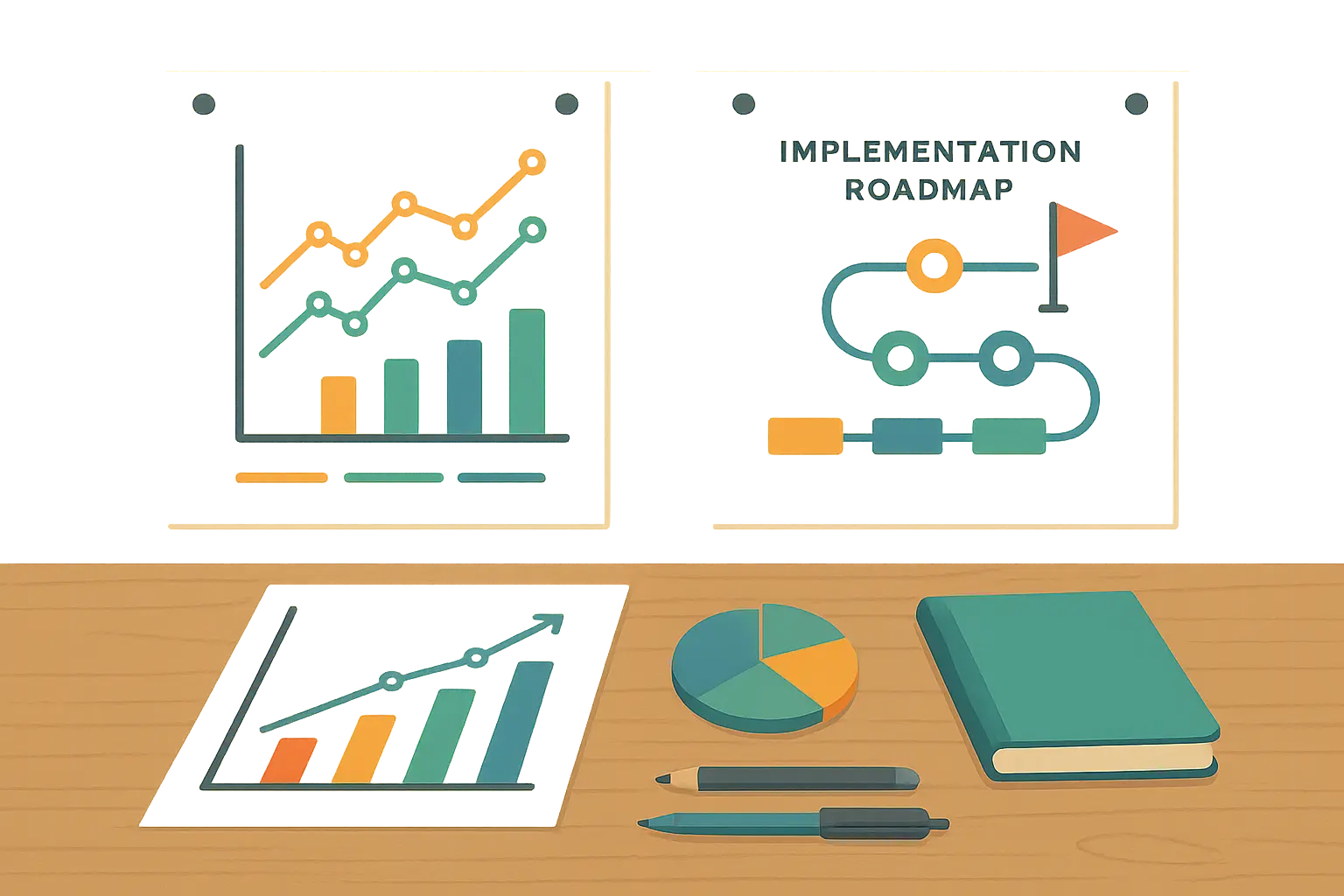
Start With Your Framework Assessment
Before you copy any strategy, run your business through those five criteria I mentioned earlier. Market context determines which strategies are even possible in your industry. A healthcare company can’t use Uber’s surge pricing, but they might adapt value-based principles.
Strategic alignment matters way more than clever tactics. Netflix’s tiered pricing works because it matches their subscription model perfectly. Trying to force a subscription approach onto a transactional business usually ends badly.
Implementation complexity gets underestimated all the time. Adobe’s transition to subscriptions took years and massive customer education efforts. Make sure you actually have the resources and patience for your chosen approach.
Test Before You Transform
Look, I know everyone says “test everything,” but let’s be real – if you’re running a small business, you probably can’t A/B test 300 markets like DoorDash. Start small. Maybe try the new pricing with your next 20 customers and see how they react. Or test it in your slowest location first.
The point isn’t to be perfect; it’s to not accidentally destroy your business overnight.
Start with your least price-sensitive customers. Premium segments often accept price increases more readily than budget-conscious ones. Use their feedback to refine your approach before expanding.
Measure everything that matters. Revenue changes are obvious, but customer satisfaction, retention rates, and competitive responses matter just as much. Set up tracking systems before you make changes, not after.
Common Implementation Mistakes to Avoid
Don’t change too much at once. I’ve seen businesses try to overhaul their entire pricing structure overnight. Customers need time to adjust. Gradual transitions work better than sudden overhauls in most cases.
Communication becomes absolutely critical during pricing changes. Uber’s surge pricing works partly because they explain it clearly upfront. Customers hate pricing surprises way more than they hate high prices.
Competitive responses are inevitable. When Robinhood eliminated trading commissions, every major broker followed within months. Plan for how you’ll maintain your advantage when competitors inevitably copy your approach.
When to Get Professional Help
Here’s the thing nobody talks about – most businesses don’t have fancy analytics teams or million-dollar market research budgets. You’re probably making pricing decisions based on what feels right, what your competitor is charging, or what you think you can get away with. And honestly? That’s not always wrong, but it’s definitely not optimal.
Complex pricing strategies require sophisticated analytics and market intelligence that most companies don’t have internally. This is where partnering with experts becomes valuable.
The Marketing Agency’s data-driven approach addresses the critical challenges revealed in these pricing case studies. Their “obsessively curious” methodology ensures pricing strategies are backed by concrete performance metrics rather than guesswork.
Market gap analysis becomes crucial for identifying pricing opportunities and competitive advantages. The agency’s “highly tuned scientific approach to market analysis” helps businesses see opportunities that others miss.
ROI-focused strategy implementation ensures pricing changes deliver measurable business results. With pricing being a direct revenue driver, having partners who focus on “performance and ROI” makes the difference between theoretical improvements and actual profit growth.
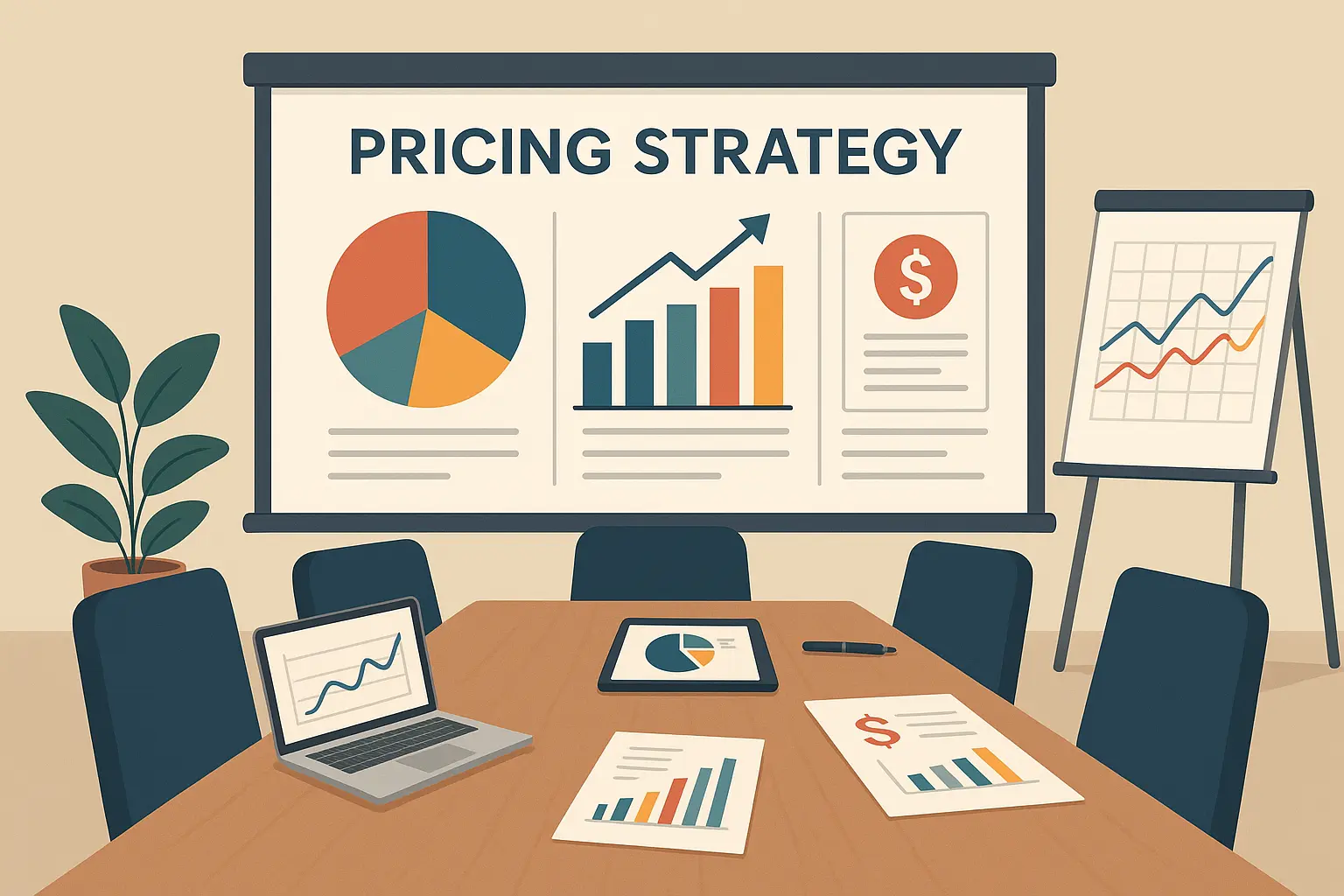
Final Thoughts
Here’s what I’ve learned after watching hundreds of businesses mess around with pricing: the ones who treat it like an ongoing conversation with their customers instead of a mathematical equation tend to do better. Yeah, you need the data and the frameworks, but at the end of the day, you’re dealing with people. And people are weird about money.
These 25 case studies prove that systematic approaches consistently beat gut-feeling decisions. The most successful companies share common traits – they use structured frameworks, test changes carefully, measure outcomes rigorously, and adjust based on real data.
Tech companies excel at tiered pricing and value-based segmentation. E-commerce businesses master transparent pricing and membership models. Healthcare companies focus on demonstrable value and outcomes. Financial services succeed through simplification and transparency.
But here’s the thing – it’s not about copying specific tactics. It’s about understanding the principles behind successful pricing strategies. Market context determines what’s possible. Strategic alignment ensures sustainability. Implementation complexity affects your success probability. Measurable impact validates your decisions. Risk assessment prevents disasters.
The framework approach works across industries because it addresses fundamental business realities rather than surface-level tactics. Whether you’re pricing software subscriptions or restaurant meals, the same evaluation criteria apply.
Your pricing strategy should reflect your unique value proposition while considering competitive dynamics and customer expectations. The companies in these case studies succeeded because they understood their markets deeply and executed their strategies with precision.
Start with small tests. Measure everything. Scale what works. Avoid what doesn’t. Most importantly, remember that pricing is an ongoing optimization process, not a one-time decision.
The companies in these examples didn’t succeed because they found some magic formula. They succeeded because they paid attention, stayed flexible, and weren’t afraid to admit when something wasn’t working. That’s probably the most human approach of all.
The businesses that master this process don’t just survive in competitive markets – they dominate them. And honestly, that’s what we’re all trying to do, right?



